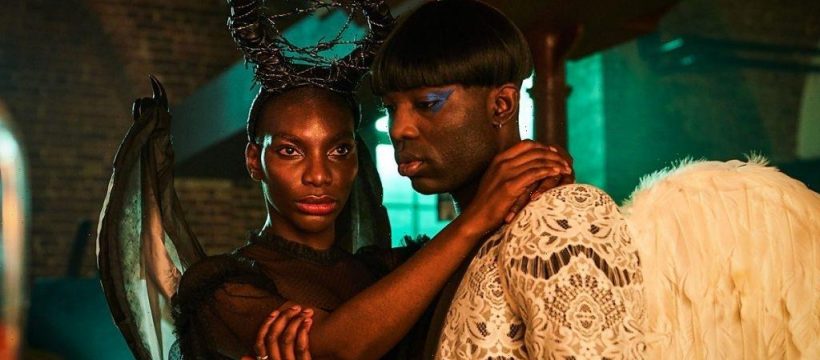For HBO Max’s I May Destroy You, costume designer Lynsey Moore had two main objectives: make it real and make it vintage. The series follows Arabella (Michaela Coel), an influencer and writer on a deadline to finish her second book, as she deals with the aftermath of being drugged and raped. Arabella experiments with different ways to heal from the traumatic experience, which Moore mirrored with her outfit choices throughout the series.
In addition to being nominated for eight other categories, including Outstanding Limited or Anthology Series, I May Destroy You has earned Moore a nomination in the Outstanding Contemporary Costumes category for the episode titled “Social Media Is a Great Way to Connect.” Moore’s work on this episode includes Halloween costumes for the three main characters that highlight their own personal journeys.
How did you approach designing Arabella’s look?
Michaela had mentioned at the beginning that she really liked the idea of having a ’90s vibe to it, and there was a lot of high-waisted jeans, which became the starting point of the silhouette. From there, Michaela’s very interested in sustainable clothing, as am I, and using second hand, which led us down the vintage route. So for me, I start mood-boarding and finding references that I think works. And obviously in the script, she’s got pink hair, so it was working on those kind of pinky, purply, bluey colder tones for her color palette. It was a case of just finding things. So I found the fur coat that she wears, that kind of red and blue iconic thing, and I knew at that moment that this was going to be the piece. When I found it, it jumped off the rack and I was like, “this is going to shape it.” So from there we had the jean silhouette, we had this jacket and a couple shirts, and that was the first fitting.
How did her look change throughout the season?
So, obviously the story is about healing and it’s about recovery. And it’s about the rebellious journey that she makes. It was important that her wardrobe had a journey too, which it really does. And obviously her weeks changed massively, which changes the silhouette to match her feelings and everything that the costumes represent. So, there are moments in the script where she’s feeling really strong and empowered and there’s much bolder costume choices. There’re moments where it’s part of her healing process, so she’s experimenting and she’s trying yoga and she’s painting. So, she’s nervous and she’s experimenting and trying everything as part of our avenue of exploration for recovery, and it’s important that her wardrobe changes with that. Obviously, Halloween is a very key one wardrobe wise. That’s a big change.
How did you approach designing those Halloween costumes?
Halloween was actually very tricky. It’s one of the trickiest episodes to design because there were many, many rewrites of that episode and it changed a lot, so I had several fittings with Michaela. It changed massively. We had an army angel at one point, it was this whole camouflage costume. It was scripted that the three of them as friends were going as angels, and Arabella’s costume was a dark angel. So it was the initial starting point of, “let’s think about these characters would do as fancy dress?” Terry (Weruche Opia) will be the white angel. She’s going to be sassy and glamorous because that matches who she is. And at that point in the story, she’s the good friend, so the white’s quite symbolic of purity and good. You’ve then got Kwame (Paapa Essiedu), in kind of a crossroads point. So, the black and white suit was kind of a midway point for him. And again, he’s that fun, out-there, creative person, but he’s also openly gay and openly confident in his wardrobe. So, this idea of him wearing a suit, but he wouldn’t wear a shirt because, why not? You know, he doesn’t need to. He breaks the rules. Then you’ve got Arabella at this point in the story, where she’s very conflicted and slightly delusional. She’s taking people down on social media, but also she really believes she’s doing good and she’s helping other survivors by giving them a voice, which is the angel part of the costume, the skirt and the wings, but this conflict between the good and the bad was really tricky to communicate in the costume.
Read More About:
Source: Read Full Article

